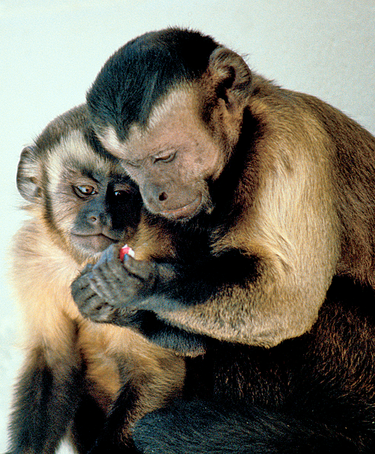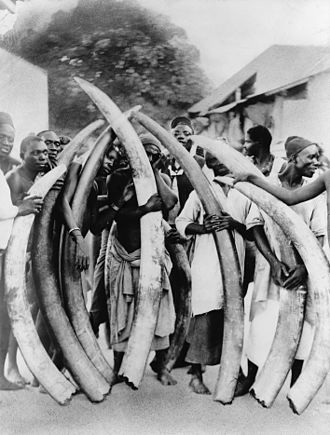Worth almost $200 billion according to the UN, the illegal wildlife trade is the fourth largest illicit trafficking market in the world, after drugs, guns and humans. Traditional Chinese Medicine, Bush Meat and Trophy Hunting are the major drivers of the industry. The trade has catalysed the destruction of habitats and the extinction of species. Recently, the IUCN downgraded both species of African elephants on their Red List of Threatened Species. Despite global efforts, the ivory trade continues to push the species towards extinction. The scenario is much worse for species which do not receive as much international focus, including giraffes and leopards.
Invasive Species Galore
Another major issue is the introduction of invasive species. Exotic Pets are often brashly released into the wild, severely deteriorating the local ecosystem balance. One such example of this is the introduction of the African Catfish in India’s streams. This highly adaptable species has conquered much of India’s wetlands. Its highly predatorious nature has destroyed innumerable aquatic ecosystems, including that of Bharatpur Bird Sanctuary.

The Illegal Wildlife Trade Funds Terrorism

The wildlife trade also sponsors militancy across the world. Poachers are usually a part of larger criminal syndicates, such as terror outfits. A UNEP report claims that ivory worth $400 million funds militancy in Central and Eastern Africa. Outfits such as Somalia’s Al-Qaeda linked terror group al-Shabaab, rely on the illegal logging industry worth nearly $100 billion. In South Asia, insurgent groups in North East India, Cambodia and Myanmar are heavily reliant on the illegal trade of rhino horns and bear paws.
SARS, Covid19 and Tubercoulsis are linked to Illegal Wildlife Trade
One of the major threats of the wildlife trade is the transmission risk of zoonotic virus. These refer to pathogens which have been transmitted from non-human beings to humans. There is no better example of the potential health risk of the illegal wildlife trade than the COVID-19 pandemic. Over 4 million people have lost their lives due to this horrendous disease in just over a year.
There are two schools of thought pertaining to the origin of this fatal disease. The initial hypothesis was that it was spread through the Wuhan Wet markets. The pathogen behind the pandemic, SARS-CoV-2, is closely related to coronaviruses found in bats and pangolins. However, the intelligence agencies of numerous countries, including US, UK and Australia, suggest the virus might have been developed to be deployed for biowarfare. There seems to be growing evidence of a “Lab Leak Theory” in the Wuhan Institute of Virology. Regardless, it has been suggested that the institute was studying deadly coronavirus sequences in bats. Animal to human transmission has been established through both theories.
Exotic Wildlife Tourism has hidden costs
Recently, a study by the Animal Welfare Board found that at least 10% of Ajmer’s Elephants suffer from tuberculosis. 20% of Malaysia’s captive elephants suffered from the same diseases. Shocking 24% of the nation’s mahouts also suffer from either active or latent tuberculosis, highlighting the high incidence of animal-human transmission. The high incidences of TB amongst captive elephants can be attributed to the highly non nutritious diet provided by their owners.
Kopi Luwak, the world’s most expensive coffee, also indirectly contributes significantly to the illegal wildlife trade and the spread of zoonotic diseases. The coffee is made by collecting and processing semi-digested beans from the excretions of the Asian Palm Civet. Traditionally, the seeds would be collected from wild animals. However, the rarity of seeds, and high profit margins have urged coffee producers to capture civets.
The animals are kept in appallingly unhygienic conditions. Their diets consist of nothing but coffee beans. It is no surprise therefore, that captive civets suffer from a wide range of infectious diseases. In fact, there have been countless cases of SARS transmission between civets and humans. Unfortunately, unproductive and aged civets are sold to the wet market, further exacerbating the risk of transmission.
A Ray of Hope
However, there is some hope. India’s 500 Dancing Bears are being provided a new lease of life. These bears were captured by poachers as cubs and sold to the Kalandar tribe. Members of this community would ruthelethless tame the bears. Once trained, the bears would be forced to perform dances in metropolitan cities, such as Delhi and Agra. Fortunately, Wildlife SoS has rescued all remaining Dancing Bears and provided them with the necessary rehabilitation.
Similarly South Africa recently banned the canned hunting industry. Not only were lions captively bred only to be trophy “hunting”, the industry also propagated the illegal wildlife trade of lion bones for traditional Chinese medicine.
How can you help?
Fortunately, the general public can contribute immensely in the fight against the illegal trade through ethical wildlife tourism. There are significant breaches of animal rights at most captive animal tourist attractions, including Elephant Rides, Dolphin Shows, Dancing Bears, Animal Circuses and Tiger Temples. Captive elephants and dancing bears are captured from the wild as young, almost always separated prematurely from their mothers. In Tiger Temples and Dolphin Shows, the animals are regularly drugged during interactions with tourists. These industries rely on tourism revenue to function. Boycotting animal shows, elephant rides, and tiger selfies is crucial in the fight against wildlife trade. Furthermore, educating others is equally critical. Despite the social media explosion in recent years, many are still grossly oblivious of the atrocities which occur behind the scenes in these captive animal industries.
Help us Help Them! Think Wildlife Foundation is a non profit organization with various conservation initiatives. Our most prominent campaign is our Caring for Pari intiative. Pari is a rehabilitated elephant at the Wildlife SoS Hospital. 25% of the profits from our store are donated to the elephant hospital for Pari. Other than buying our wonderful merchandise, you could donate directly to our Caring For Pari fundraiser.
